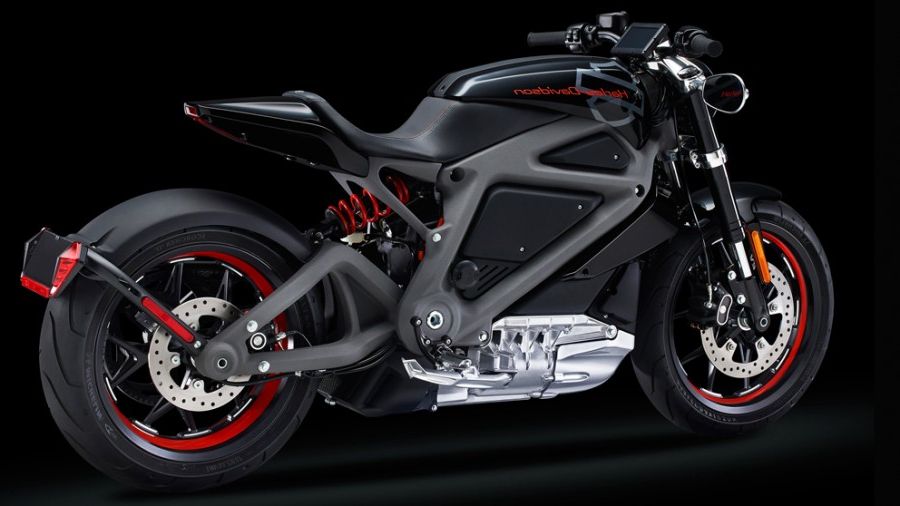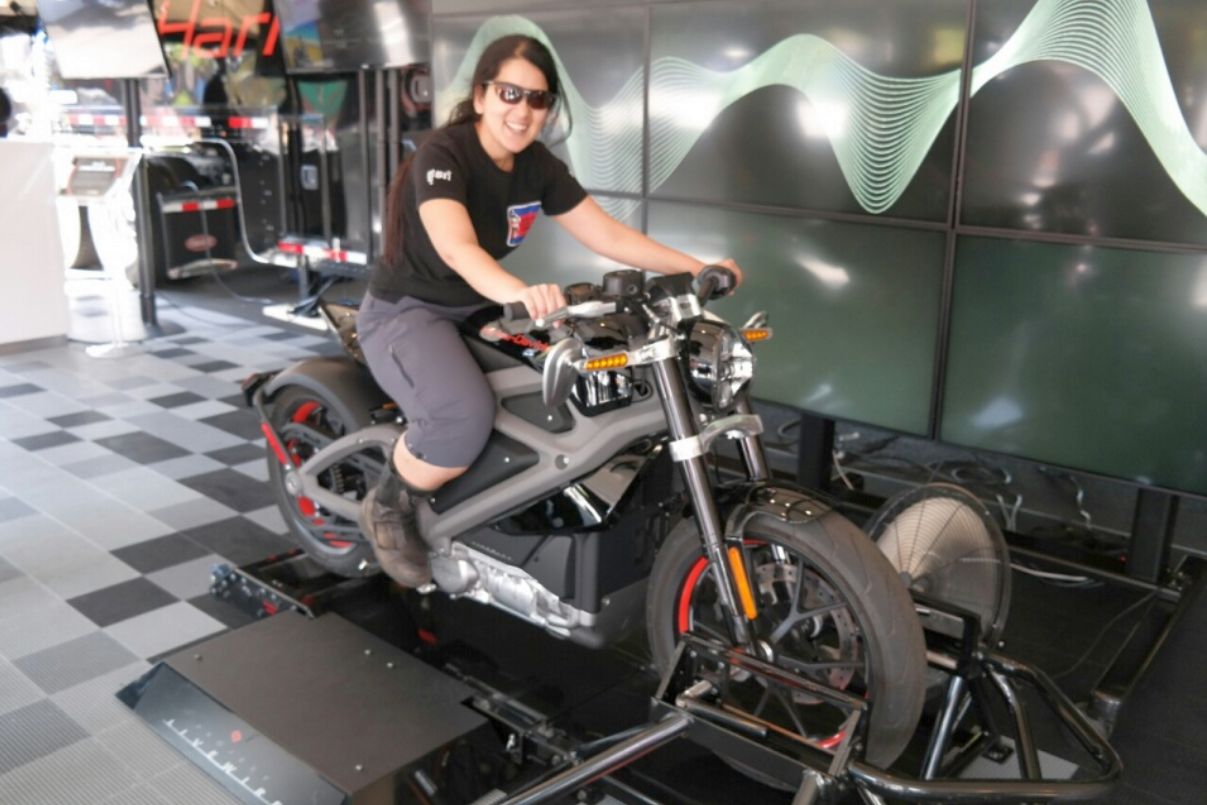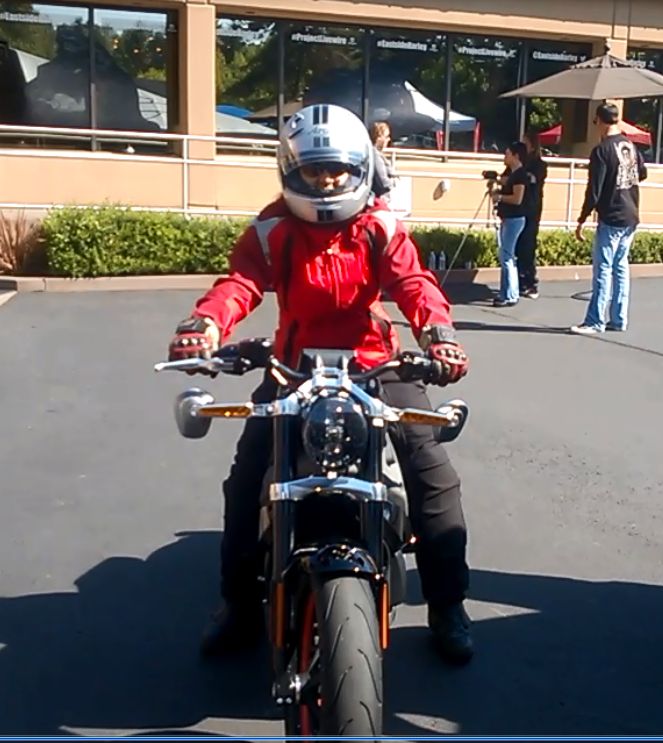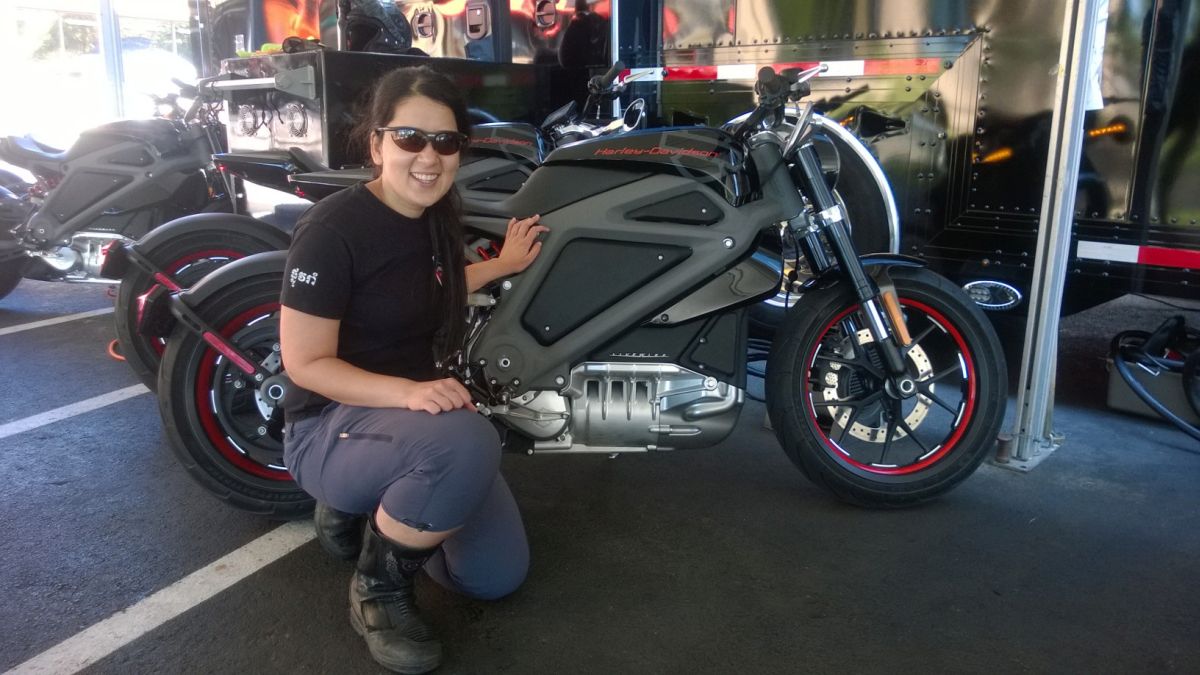Tags
Related Posts
Share This
Project Livewire test ride
On June 19th, 2014, the Harley-Davidson Motor Company made a big announcement – the launch of a prototype electric bike dubbed Project Livewire. This was certainly a big surprise for HD purists as well as the rest of us. The first images of the concept bike looked promising. With its sleek styling, flowing lines, black with red and chrome accent paint scheme, it looked nothing like the traditional American-made cruisers that the factory has been putting out for the past 100 years.
HD purists were up in arms against what they perceived to be the company selling out to the Prius-driving, latte-sipping, tree-hugging hippies. The rest of the riding crowd – the sport bikers, the younger riders, the technology lovers and the electric bike aficionados – were curious but skeptical. Electric bikes have thus far been the province of small startups like Zero and Brammo who have consistently been putting out production quality street and dirt bikes since 2006, and one-off pioneers like Eva Håkansson, whose ElectroCat was to the first electric motorcycle to complete the Pikes Peak International Hill Climb in 2010.
I’ve kept an eye on the evolution of electric bikes ever since the Zero first launched. The ride reports were promising but the limited range (approximately 40-50 miles between charges) and the lack of charging station infrastructure meant that it would be a while before I put down serious money for one. The old school motorcyclist in me was a little reluctant to give in to this change. Thus, I imagine, it has always been, from the switching over of landlines to mobile phones, and paper maps to GPS units, all changes that have happened in my life time. There is no stopping disruptive technology though, and the world moves forward whether or not you choose to go along with the change.
How did I get this incredible opportunity to ride a Project Livewire concept bike? Long story short – Jeff Henshaw of Microsoft Corp wrote a brilliant open letter to Harley Davidson congratulating them on making such a bold move urging them to bring these bikes to production immediately after fixing the range and battery charge time issues and pricing them to right to make them accessible to a different crowd. Harley Davidson HQ took note and contacted him, offering to set up a special test ride day for Microsoft motorcycle riders, a community that I’ve been fortunate enough to have been a part of for almost ten years. This would be part of their Project Livewire Experience Tour. When I saw that the Livewire had a low seat height of 31″, I signed up immediately and made the cut for the small group of riders who would get to ride the bike the tour hit Seattle. Major thanks to Jeff for making this happen!
Yesterday was the big day. I arrived at the Eastside Harley Davidson dealership bright and early for my ride slot of 9:50AM. I checked in and signed the legal waivers accepting the risk for possible death and dismemberment during the ride. I was instructed to come back ten minutes before the ride to watch an instructional video. I wandered over to the demo stationary bike. Without a doubt, this bike caters towards the sport bike and café racer crowd with its mostly standard riding position. The handlebars are set low and the rearsets are a little sporty but not aggressively so. It looked simple, sleek and beautiful. Everything about it looked production-ready.
I swung a leg over it and got on. The bike claims a low 31″ seat height and a somewhat skinny profile, meaning it fit me perfectly. I could touch the balls of my feet down on both sides or in the case of the real bike, I could tip it on one side to flatfoot it. The seat and riding position felt comfortable. The lack of a clutch was a bit jarring. The brake lever was the only part of the bike that could have benefitted from having a higher quality part substituted. A TFT screen was centered on the handlebar. On both sides were a set of switches. To the left were two rocker switches for horn and lights, with a switch at the bottom for the left turn signal. To the right were an identical set of switches with two rocker switches for the On and Run functions, along with a right turn signal switch. I found this last switch difficult to reach with my hand on the throttle. I also found this splitting up of turn signals a little unusual and unnecessary as all bikes I’ve ridden have incorporated left and right turn signals into one switch.
I pressed the On button and the screen flickered on. It showed two ride modes – Range and Power. These were fairly self-explanatory, giving the rider the ability to optimize for either a longer range of battery or more power at the expense of a shorter range. This mode could only be set before the bike was started. I selected a mode and pressed the Run button. And this is what distinguishes this bike from the other electric bikes out there – the sound. The high pitched whine is reminiscent of a fighter plane. Or something ominous straight out of a sci-fi movie. It is nothing short of thrilling to listen to. The more I twisted the throttle, the more pronounced it got. Trust Harley Davidson to come up with yet another trademark sound. I couldn’t wait to try the real thing!
I hopped off the stationary bike and walked over to the section with the instructional video which went over some of the key features of the bike. They warned potential riders about the lack of clutch and the regenerative braking, where the bike applies brakes as soon as you rolled off the throttle. For the test ride itself, we went out in groups of seven consisting of five test riders on Livewires and two riders on traditional Harleys, one at the front and one behind, to keep the group together.
I turned the bike on, selected the Power mode, hit Run and twisted the throttle. The bike glided forward gently and I guided it out of the tented area into the parking lot. When it picked up a little speed, I rolled off the throttle and the regenerative braking instantly kicked into action, slowing down the bike. I did this a few times to get a feel for the system. The instantaneous feedback to rider input was delightful. Finally, I got out of the parking lot and followed the lead out onto the streets. What followed next was pure heaven. The bike’s reported instant torque from standstill and acceleration of 0-60 mph in 4 seconds was not exaggerated. We went through straights, a few corners, some long sweepers and a roundabout, and the Livewire was a sheer joy to ride through it all. The smooth feel, the almost total lack of noise of moving parts with only the progressively louder high pitched trademark whine combined into an exhilarating sensory experience. The sight and sound of the bikes turned heads everywhere we went, from curious bystanders to passing traffic. I had a big grin on my face from start to well after the finish.
After we parked the bikes at the end of the ride, HD personnel were waiting to whisk us away and debrief us on our first impressions and thoughts on how to improve the bike. They are certainly taking this task very seriously and it gives me hope that the people at the top get the message that the market is ready and excited about this offering. If the range and battery charge time were improved and the bike were offered at a reasonable price point, people *will* be snapping these up. These people might not necessarily be the HD traditionalists but it’s time HD started reaching out to new, younger consumers who are excited at the thought of getting a beautiful American-made machine with the latest modern technology.









